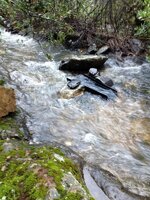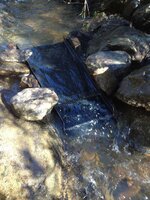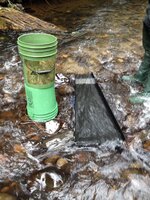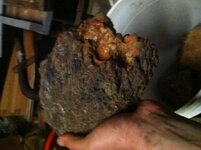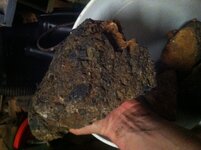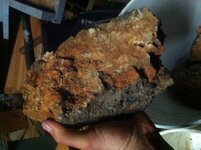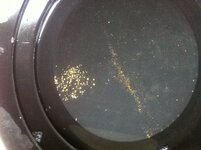- Thread starter
- #41
So I got out with it again this weekend, purely with the intention of practicing getting it setup right. The area I was in is not known to be gold bearing. I still think I had problems. I got it set up with a great amount of flow, it was clearing all but the bigger rocks from the grizzly. Really I only needed to help a few rocks over it. So that part seemed great, but the trap just did not retain hardly any material. Every time I stuck my finger in the trap I found the material to be of such a small amount that it was all contained underneath the tubes. Now to be fair it was mostly gravels and light colored sands that I was feeding into the box. Last time the trap filled up, this time it seemed like it was being blown out. So too much flow? I still find the actual act of getting the sluice positioned well to be challenging, but I think I'm getting the general process down better. It looks something like this:
1. find a reasonably deep section with enough flow for the box.
2. find about 2-3 dozen skull sized rocks, and build two different piles up to trap the sluice between.
3. holding the sluice down between the piles with one hand, scramble around adjusting the rock to pin the box down.
after that it should be good. Sound about right?
So how full do your guys's fluid beds get? Does it sound like a reasonable conclusion, that I was getting too much flow and blowing out the trap? When I cleaned out the trap and panned it down, I did find that it was capturing black sands, which is better then my first attempt. I just still don't feel like the fluid bed is working like I expected it to...
1. find a reasonably deep section with enough flow for the box.
2. find about 2-3 dozen skull sized rocks, and build two different piles up to trap the sluice between.
3. holding the sluice down between the piles with one hand, scramble around adjusting the rock to pin the box down.
after that it should be good. Sound about right?
So how full do your guys's fluid beds get? Does it sound like a reasonable conclusion, that I was getting too much flow and blowing out the trap? When I cleaned out the trap and panned it down, I did find that it was capturing black sands, which is better then my first attempt. I just still don't feel like the fluid bed is working like I expected it to...




